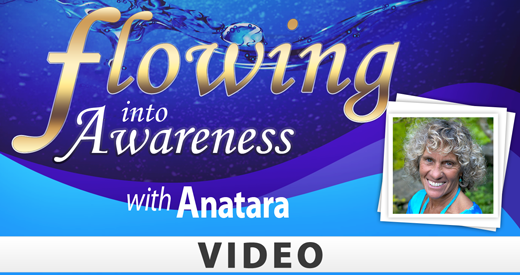| YogaHub |  |
Shantha Sri – A Spiritual Journey
[post-img]During his early years, Shantha was able to discover his own unique musical voice by mindfully becoming aware of how certain sounds, tones and frequencies brought about emotional and physical changes within him. He learned how to create his distinctive sound by putting together sequences of musical notes, creating his own chords, and playing them over and over with subtle variations of tone.
Shantha initially trained as a stills photographer before moving into television and then into the film industry. Through the years in which he worked as a photographer and cinematographer, he retained his passion for music and was determined that he would someday find a way to dedicate more time to his music studies.
With this passion for music came an interest in Eastern spiritualism. The seeds were sown in the late 1960’s when, at the age of 15, he was influenced by the pop music of the time and introduced to the sounds of Indian instruments (particularly the Sitar and Tabla) by musicians such as George Harrison of the Beatles and Brian Jones of the Rolling stones, who were experimenting with these ‘psychedelic’ sounds. Even at that young age, Shantha was deeply moved by these mesmeric sounds and fascinated by newsreels of the Beatles, along with other artists, who would travel to places like Rishikesh in India in search of artistic inspiration from higher states of consciousness through deep immersion transcendental meditation™. Shantha became inspired by the music of this period and the enthralling mystical power of India.
During his early twenties, Shantha experimented with playing and creating music for and became inspired by George Harrison’s devotion to Lord Krishna and the Hare Krishna movement. At this period in his life, he also became interested in yoga and began studying it.[tip-fact] It was not until about ten years ago, however, that it all began to come together for him. Until then, Shantha had his interest in mystical Eastern spiritualism, music, yoga and meditation, but he didn’t know how to put it all together – to find his path or his own personal musical voice in order to know his inner Self and to help others. Trips to Asia – initially China, Japan, Indonesia, and then later to Sri Lanka and India – finally enabled him to have a clearer vision and, in doing so, he finally found his personal spiritual path. At this point, his experiments in finding direction in music creation finally broke through and he began to research traditional sounds and tonal frequencies that could be used for yoga, meditation and healing therapies. From there, it was a natural progression to rediscover his yoga practice.
Shantha had the opportunity to take some sessions with LA-based yoga teacher and author Larry Payne, who teaches in the T. Krishnamacharya tradition, a style of Hatha yoga that Shantha continues to practice. He enjoyed this style of yoga as he felt it prepared him well for meditation, which was the original reason he began looking for a yoga practice. Shantha believes that his yoga and meditation practices are complementary – the one assisting the other; a balanced Yin-Yang type union.
As a Buddhist yogi, Shantha’s interest in becoming a practicing Buddhist came directly from two overseas trips. The first was in 1999 to Sri Lanka, a predominately Buddhist country. He was working on a feature film there and, in his spare time, he would take walks through the forest and high country to find Buddhist temples where he could go and meditate. Something was compelling him to do this and he couldn’t explain it at the time, but he now sees that it was his calling. It was such a strong pull – he didn’t understand it but it just felt right. So, like so much in his life, he followed his inner voice, his intuitive nature.
Another turning point came when he travelled to India in 2004. The trip was a pilgrimage for him, as he was looking for a dharma-based philosophy to follow. India being a mystical caldron – a living, breathing essence of spiritual philosophy – Shantha was able to sample all the major philosophies and religions there. It was there that he studied some yogic meditation while observing spiritual practices in the country, and he came away with a deep love for the dharma tradition , with its roots based in the spiritual philosophies of the Vedas and Upanishads. The tradition that spoke strongest to him was that of the Buddhist philosophy, and in particular the Theravadan practice (one of the original schools). He found himself naturally gravitating towards Buddhism as a personal spiritual path. It overwhelmed him, filling him with physical and spiritual vitality – and a dharma practice in the form of Buddhist Theravadan tradition was the result.
The poetry, music, art and philosophical writing that came out of that period obviously inspired many followers and ignited in him an interest that became stronger over the years until the inner spirit became clear enough within him to make him want to seek it out for himself.
Shantha believes that the principles of Buddhism, the dharma, are very similar to the doctrine of yoga written by Patanjali and the core wisdom of Ayurveda. The principle goal of yoga is to find enlightenment. Therefore, yoga and dharma philosophies are two limbs of the same spiritual body. Shantha’s belief is that the philosophies of dharma and yoga are inseparably linked to each other and to the ancient spiritual and healing knowledge philosophies of the Vedas and Upanishads. Because this ancient chain of wisdom is so interlinked, his spiritual dharma philosophy is connected to the traditions of yoga. All these philosophies inform his knowledge of life: how to live mindfully to reduce anxiety, pain and suffering.
Shantha has a deep conviction that the ancient sounds used by sages can still be used today to help us manage our health or enhance our yoga practice. He draws upon this wisdom in his work to bring about harmony of mind, body and spirit. When the body is healthy, so is the mind. And where the mind goes, so goes the spirit. One determines the other – everything is interdependent.[b-quote]
Shantha explains that how he designs music for yoga is slightly different to how he designs meditation music because he knows that music for yoga needs to work across a wide range of yoga styles and levels. He creates a variety of music with moderately fast, medium paced and slow tempos to accommodate not only style differences between the yoga traditions, but also the applications within each style. Stretching exercise, for instance, needs a slow tempo and deeply resonant frequencies. Each style of yoga requires a tailored audio ambience – and this is where he believes his music treatment is different from most off-the-shelf yoga music. His music comes out of an experimentation of himself – a practicing yogi – and it is designed for various yoga styles and applications.
Shantha is always asking practitioners for their feedback. He needs the yoga community to constantly inform him how his music is being used – what works best for what applications, what doesn’t, what individuals’ needs are. By actively listening to the yoga community, he hopes to provide exactly what it needs and wants.
Shantha believes that his work is still evolving and will hopefully continue to do so. He relies on yoga practitioners to keep him informed about their use of the music soundscapes so that he can continue to understand what is required and work at developing a useful resource for the global yoga community. This is why Shantha enjoys being involved in YogaHub and especially in the Virtual World Yoga Conference, as it gives him the opportunity to hear from people around the world about how they use music and what they are looking for from music and soundscapes.
Volumes 1 and 2 of Shantha’s “Music for Yoga” series, as well as some meditation music CDs, are available online from the YogaHub store





